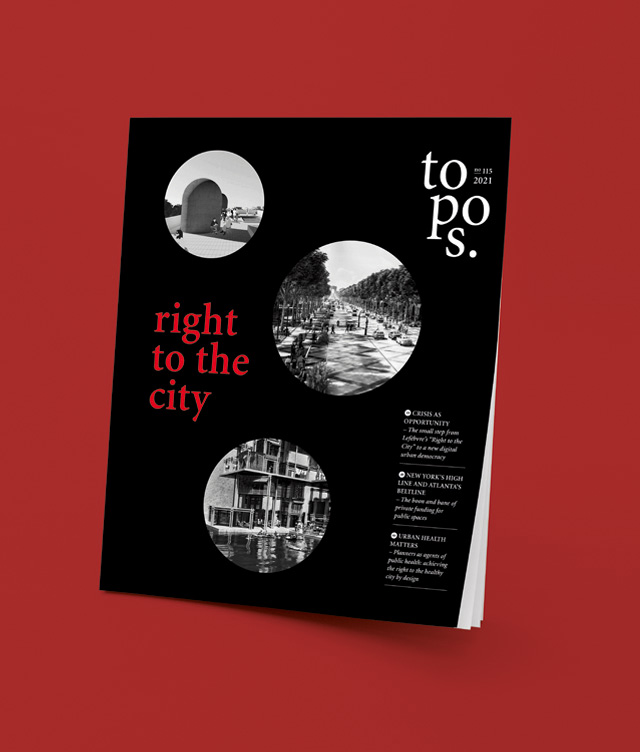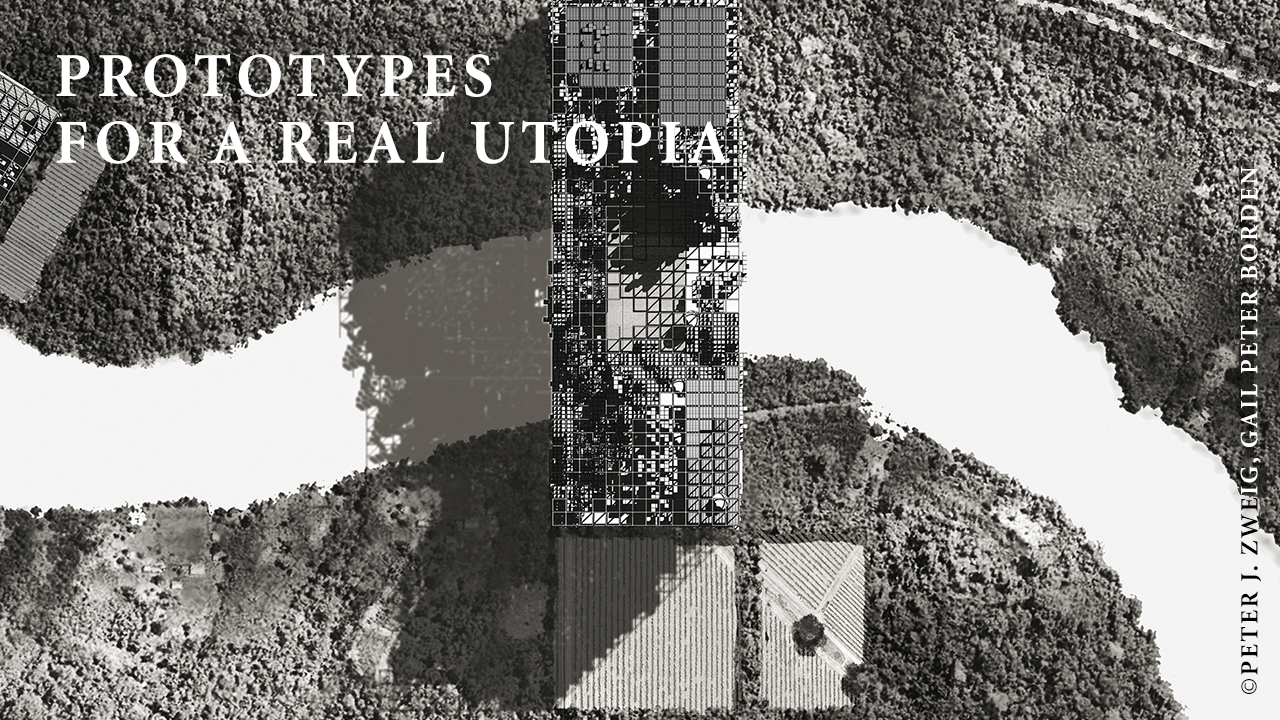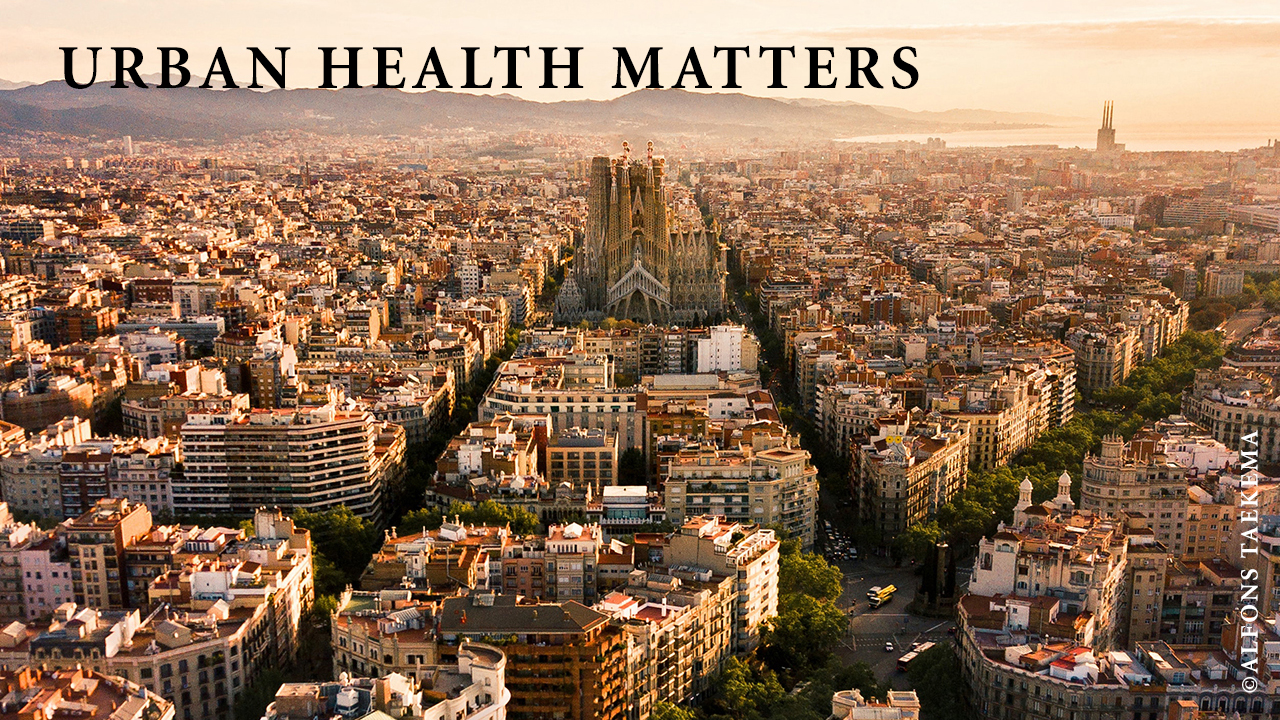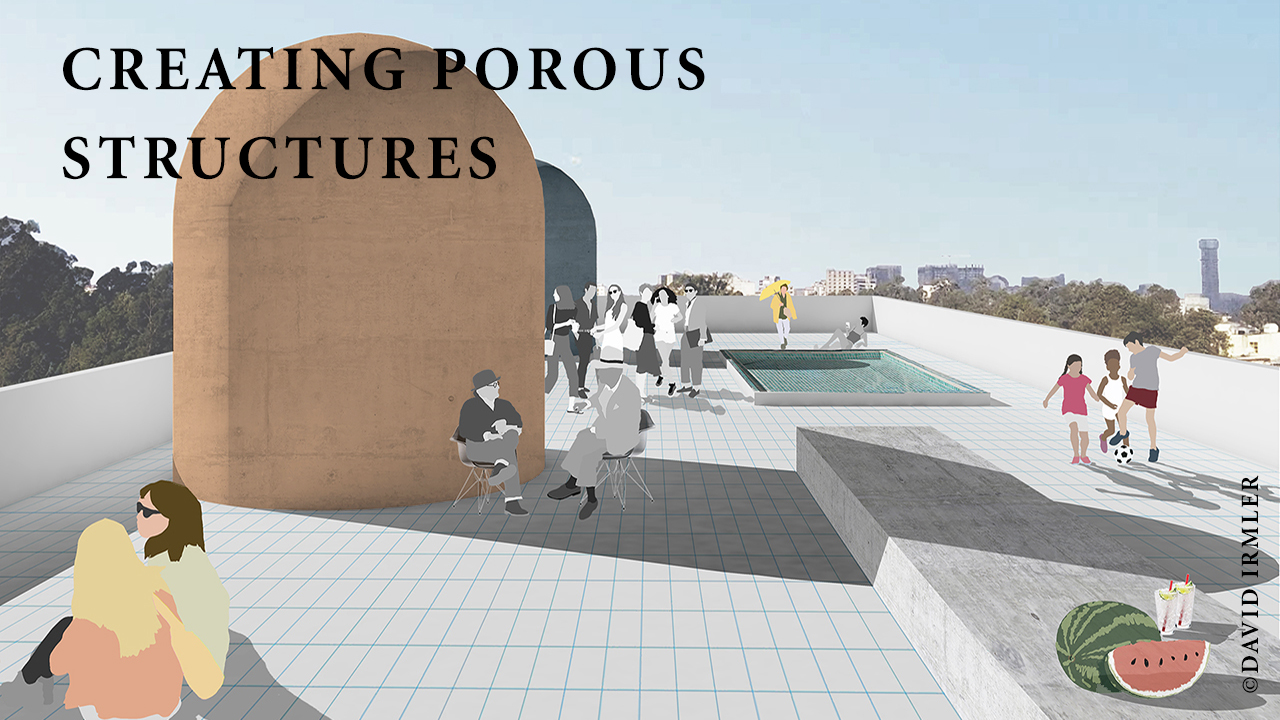

topos 115: right to the city
The famous French sociologist and urban researcher Henri Lefèbvre was born on 16 June 120 years ago. His "Right to the City", written in 1968, is a classic and at the same time a fundamental work for every urbanist. This anniversary is taken up by topos: Exactly on June 16 the issue 115 on the topic of Right to the City will be published. What does the Right to the City imply? Who owns the city? Who struggles for open space, for participation, for greenery, for resources? Which dynamics have global urbanization processes set in motion? What are the consequences of the increasing commodification of urban spaces? The Right to the City opens up a space full of possibilities – while the issue also discusses threats and consequences that accompany it.
Get a free preview of our current issue – enjoy the read.
about topos
topos - The International Review of Landscape Architecture and Urban Design - focuses on landscape architecture as well as increasingly on architecture and urban planning. It sees itself as an interdisciplinary think tank aimed at addressing the challenges urban areas will face in future. The professional magazine strives to inspire planning practitioners, urban experts and professionals who shape the cities of tomorrow. Every issue of the periodical, that is published quarterly, is dedicated to a different topic and deals with a broad array of projects and planning work in countries all over the world.


Prototypes for a real utopia
The contemporary, global geopolitical landscape is indelibly marked by rising international conflicts and nationalism creating multiple regions and countries beset by massive migrations. Today, the refugees are caught between borders with so few countries accepting their growing numbers, while they become trapped in refugee camps. These expanding settlements were intended to be “temporary” tent communities. However, the camps have increasingly become permanent, such as in Rabouni, Algeria, in a camp that is now over 40 years old. Generations have been born in camps that have never seen their homeland. It is within this context of the refugees’ search for utopia that the idea for a City of Refugees was born. The city transcends the immediate fate of the refugee and the reason they were torn from their homeland by proposing a new foundation for a city to exist in a world that is increasingly not giving a safe haven to those fleeing their country: It is a place that believes in the future of the refugees becoming citizens of the world and provides a soft place to land. And it is within the notion of a 21st century search for utopia that the City of Refugees developed the proposition for four cities on four continents as prototypes for a real utopia for housing those trapped between political borders. The utopian concept of the four cities creates a platform for a new, global multi-ethnic society based on justice and tolerance: a city conceived as being economically viable in a sustainable, net zero environment. Read more in the print issue or the ePaper.


Urban Health Matters
The WHO estimates that almost 25 per cent of global deaths can be attributed to environmental factors, such as climate change, air and water quality, noise, radiation, agricultural practices and the built environment. It's a fact that the way we design, construct, manage and inhabit cities affects our health and the ability to respond to crisis. To achieve improvements in the wellbeing of urban dwellers, health should be at the centre of future public policy and decision making. Architects, urban designers and landscape architects could act as agents of public health to create resilient communities and supportive environments.
Read more in the print issue or the ePaper.


Creating porous structures
Can an embassy be a place of encounter and openness? Can embassy’s perimeter walls, which stand for inaccessibility and deterrence vis-à-vis the public space, mediate between people and the space? Can it even be a point of contact and information for refugees? Focussing on the office of the EU Delegation in Addis Ababa in his master’s thesis, the German architecture graduate David Irmler proposes a new embassy typology that makes the perimeter walls the subject of architectural intervention. Inspired by Richard Sennett, the idea is to turn the impermeable boundary of the embassy walls into a porous membrane.
Read more in the print issue or the ePaper.
